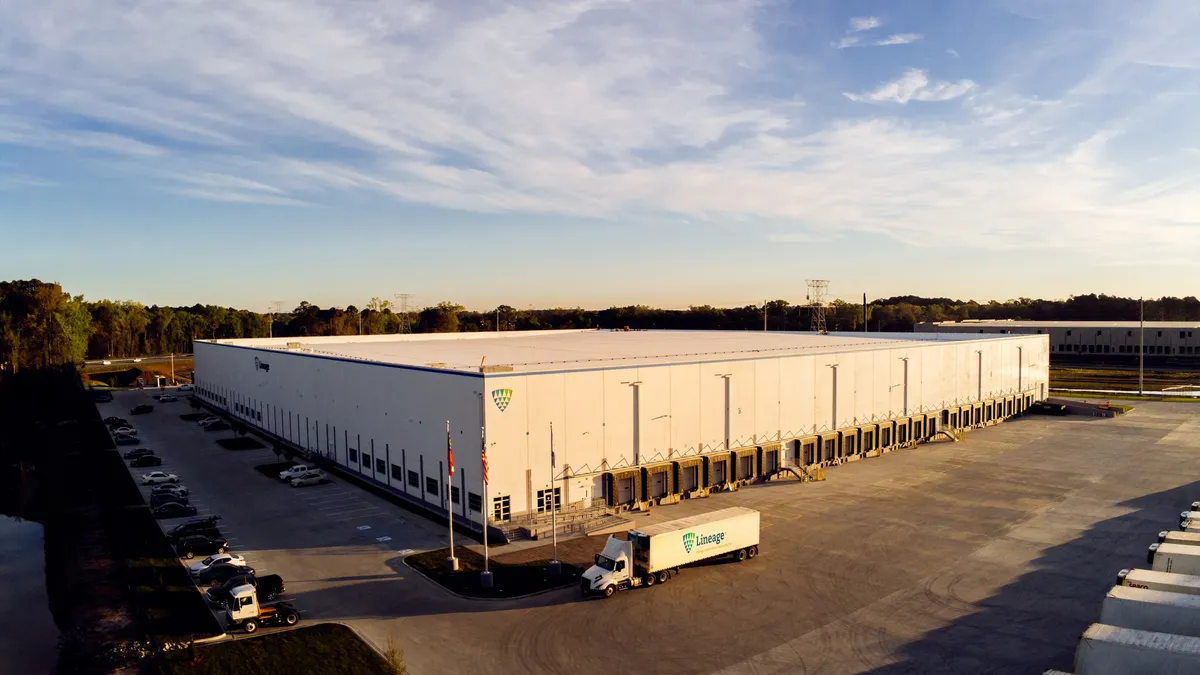Buoyed by a flood of warehouse capacity hitting markets across the U.S., industrial real estate tenants are looking to expand their presence this year into both familiar and emerging markets.
Commercial real estate firm CBRE expects an uptick in leasing activity as companies grow their warehouse footprints, said James Breeze, vice president and global head of industrial and logistics research.
"Despite all the economic uncertainty, consumers continue to consume," Breeze said. "That means that some occupiers who are waiting are just going to have to get back into the game and restart their expansion plans."
But which markets are logistics and warehouse operators likely to expand into? Location, labor availability, local regulations and individual company needs all play a part in leasing decisions. However, in conversations with industrial real estate experts, three markets emerged as likely hot spots this year.
Savannah, Georgia
Warehouse tenants have Savannah, Georgia, on their minds.
The Port of Savannah's status as a key East Coast port is driving increased demand for industrial real estate in the area. Savannah also offers a viable alternative to Atlanta-area distribution centers for some occupants, according to Stephanie Rodriguez, national director of industrial services at real estate giant Colliers.
Industrial tenants securing new space in the Savannah market include supply chain service providers like Win.IT America and Customized Distribution Services, according to a January report from Colliers. The automotive industry also serves as an important driver of growth, with Hyundai Motor Group building a mass-production plant for electric vehicles in nearby Bryan County.
As tenants flocked to Savannah, a CBRE report said that the market saw 15.4 million square feet of leasing activity in 2023, the most in its history. However, a rush of construction completions pushed Savannah's overall industrial vacancy rate up to 8.4%, putting downward pressure on rental rates.
"We've seen higher vacancy rates in Savannah just because of the massive amount of development, but the activity has also been good there," Breeze said.
Savannah's warehouse pipeline tries to keep pace with demand
Southern California
Securing warehouse and logistics space in Southern California is becoming a little easier, making the area more appealing for prospective tenants. After a stretch of red-hot demand sparked by the COVID-19 pandemic, the market featuring the critical Port of Los Angeles and Port of Long Beach finally began to cool off last year.
Logistics real estate rents in Southern California fell by 5.3% in 2023, according to the Prologis Logistics Rent Index. Both greater Los Angeles and the Inland Empire, a distribution hot spot in the region, saw an uptick in vacancy rates last year. This slowdown in demand offers companies a prime moment to land new space in the market.
"Particularly if you want a modern space in SoCal with proximity to that population, as well as those ports, I think 2024 is going to be a great year to sign a lease and establish either a bigger presence or a presence there," said Melinda McLaughlin, SVP and global head of research at Prologis.
Southern California rent growth finally cools down
Last year, shippers looked to diversify ports of entry in their supply chains and avoid potential West Coast port labor disruptions, benefiting the Gulf Coast and East Coast. But with retailers finally rebalancing their inventory levels, Southern California is poised to benefit from future import growth.
"As we see customers looking to restock rather than destock, Southern California and the West Coast generally is going to still be the first place to benefit, because even though there's been some market share shift, the majority of our imports still come from Asia," McLaughlin said.
El Paso, Texas
El Paso, Texas, is a border market taking advantage of companies nearshoring their supply chain operations in Mexico and moving goods across the border into the U.S., Breeze said.
The market's industrial vacancy rate was 3.7% last year, an increase from 2022 but still well below the 7.2% vacancy rate for Texas' top markets overall, according to a CBRE report. Its monthly average asking rent jumped from $0.77 per square foot to $0.85 in 2023.
"Demand for industrial space remained far above the historical average as tenants seek to gain or expand on the location advantages of the market," according to CBRE's report. "With existing supply still tight, tenants will continue to look at the construction pipeline to find future space."
El Paso sees a squeeze in warehouse space
Texas' industrial real estate market overall is seeing strong demand due to manufacturing activity in both Mexico and the state itself, along with the need to reach consumers in growing areas like Dallas-Fort Worth. Developers have responded by building more space, which pushed vacancy rates up in 2023 — a factor tenants could take advantage of, Rodriguez said.
"They may be able to cut some better deals with landlords who are looking to get their rental income stream going rather than waiting to do a higher rental rate deal," she said.





















